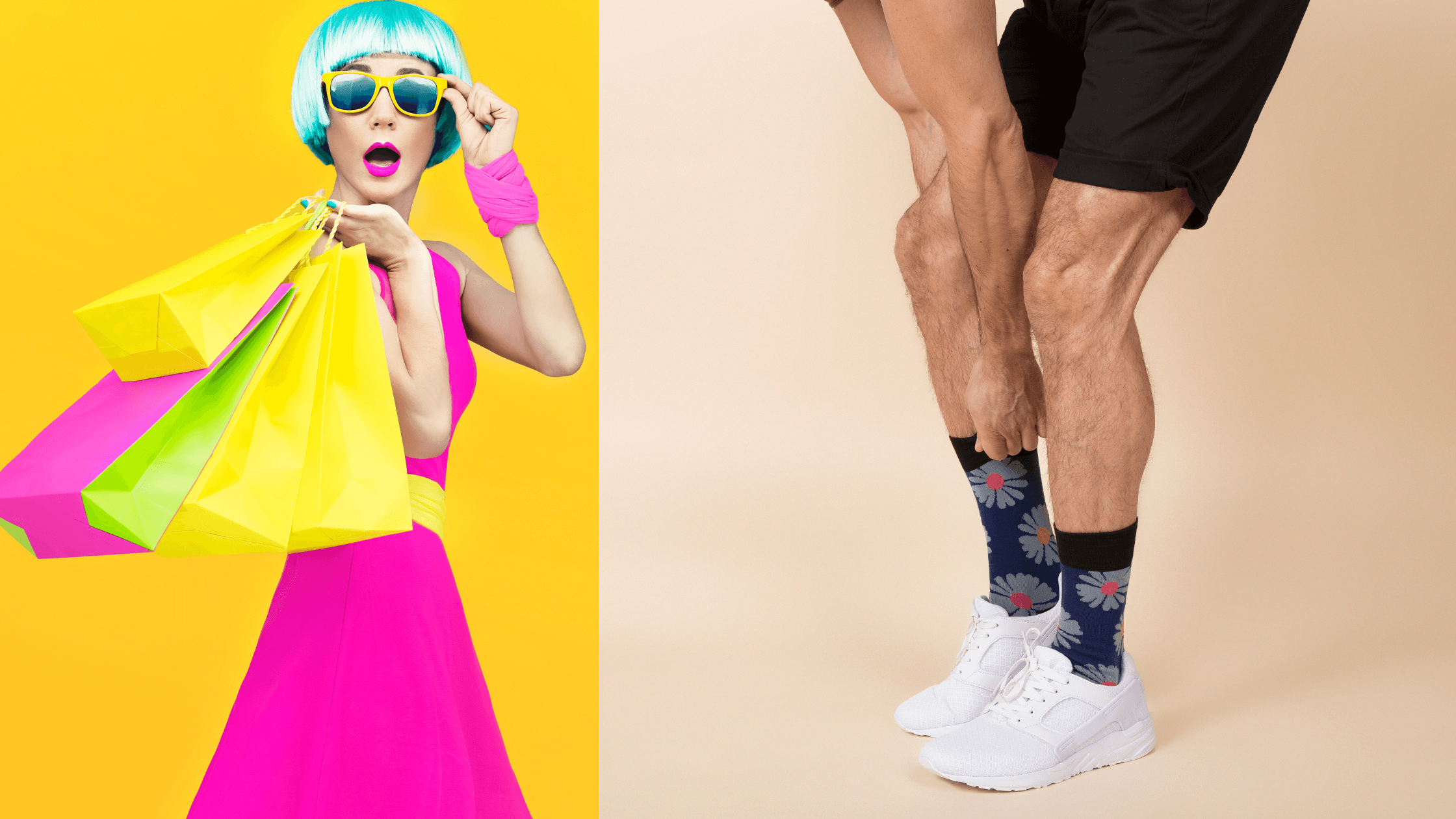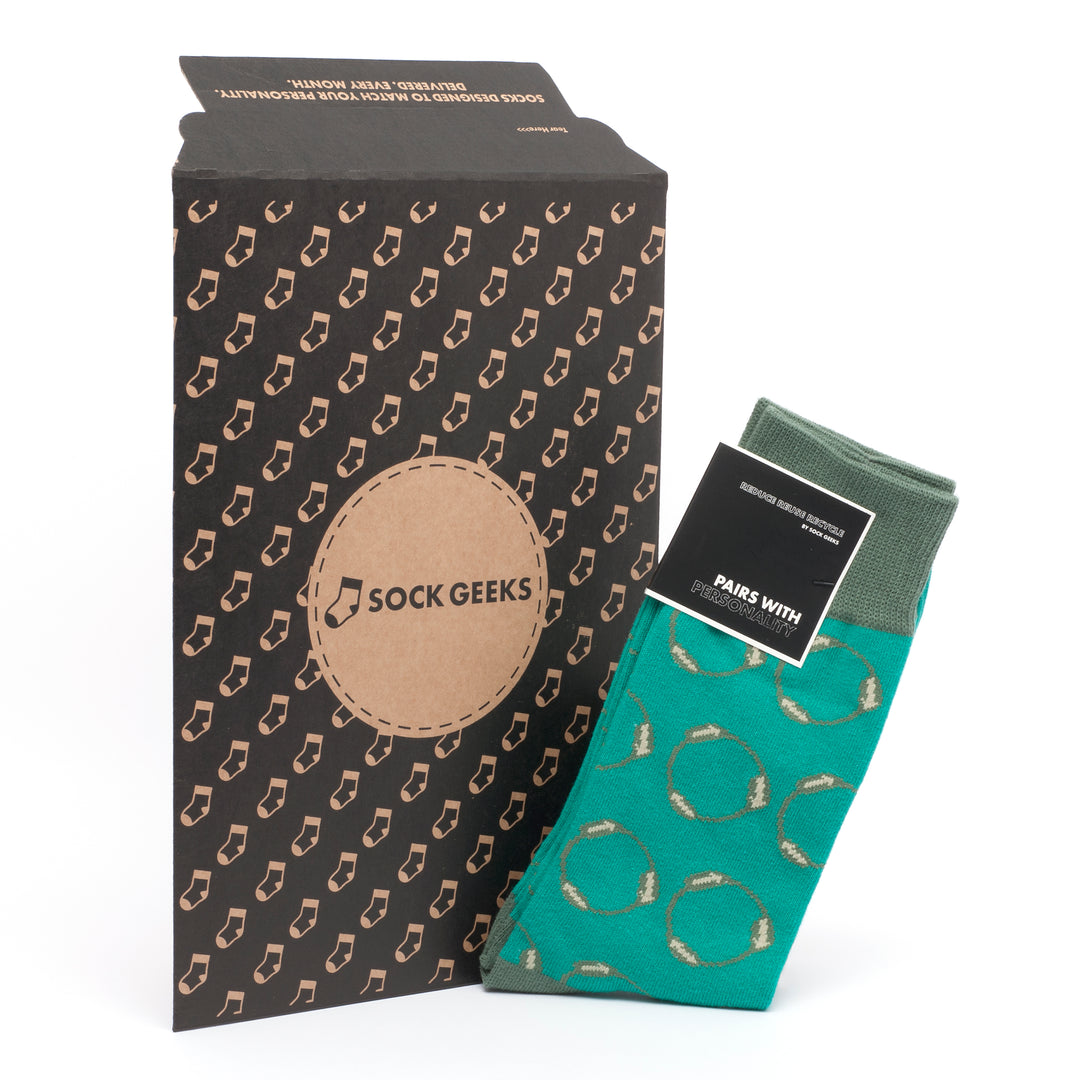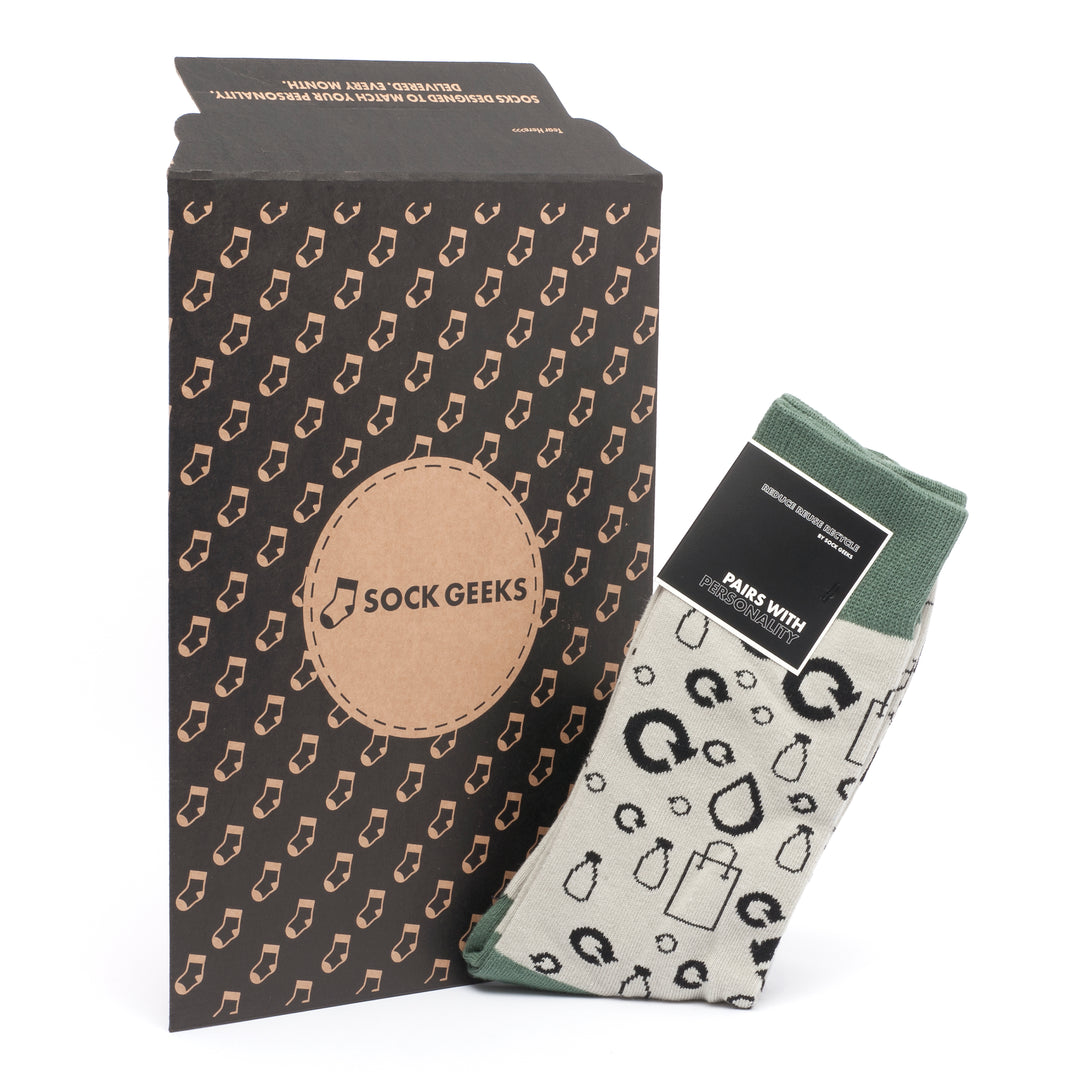Understanding the Science and Benefits
Ever experienced the frustration of stepping in a puddle and ending up with soggy socks? It's an instant mood dampener, right? We've all been there. Whether it's from unexpected rain or accidentally stepping into a pool of water, wet socks have this uncanny ability to ruin your day. In this post, we're diving into the world of wet socks – why they're so uncomfortable, how to prevent them from ruining your day, and some ingenious hacks to salvage the situation when you find yourself stuck with soggy footwear.
Wet socks might seem like a minor inconvenience, but anyone who has endured them knows they can turn even the sunniest day sour. So let's unravel the mysteries of these comfort killers, cure them, and equip ourselves with strategies to keep our feet dry and happy. Stay tuned for some game-changing tips that will save you from future sock-related disasters and ensure a comfortable fit.
Understanding the Wet Sock Treatment
Wet socks therapy, also known as the "wet sock treatment," has been associated with several potential benefits, including immune-boosting effects. The idea behind this unconventional remedy is that by stimulating the body's immune response through the application of wet socks, one can potentially enhance overall health and well-being.
Immune Boost
Proponents of wet socks therapy believe that the treatment may have a positive impact on the immune system. The process involves wearing cold, damp socks before going to bed, which is thought to stimulate circulation and activate the body's natural defence mechanisms. While there are limited scientific studies specifically focused on wet sock treatment, some research suggests that cold exposure can trigger an increase in white blood cell count and other immune responses. This could indicate a potential connection between wet socks therapy and immune function improvement.
Improved Sleep
Another purported benefit of wet socks therapy is its possible link to improved sleep. Some individuals claim anecdotal evidence of experiencing better sleep quality after using this method. Although scientific evidence regarding this specific association is scarce, it's believed that the warming effect caused by wearing damp socks might help regulate body temperature during sleep, promoting relaxation and potentially leading to improved sleep patterns for some individuals.
Pain Relief
In addition to potential effects on immunity and sleep quality, there are reports suggesting that wet sock treatment could play a role in pain relief management. Some proponents assert that wearing cold, damp socks may help alleviate certain types of discomfort or pain throughout the body. While these claims largely rely on personal experiences rather than extensive scientific validation, there are indications from research into hydrotherapy (the use of water for pain relief) supporting the idea that temperature-related interventions can influence pain perception.
The practice of utilizing wet sock treatment encompasses various perceived advantages related to enhancing wellness; however, it's essential for individuals considering such methods to consult healthcare professionals before attempting them.
The Science Behind Wet Socks
Enhancing Circulation
Wearing wet socks could potentially impact circulation by stimulating blood flow. The theoretical basis for this lies in the body's natural response to cold stimuli, which causes blood vessels to constrict and then dilate, promoting increased circulation. Anecdotal evidence suggests that individuals have experienced improved circulation after using wet socks therapy. For example, some people report feeling warmer and experiencing a tingling sensation in their feet after wearing wet socks.
Reflexology Principles
Exploring reflexology principles in relation to wet socks therapy reveals potential connections between specific reflexology points targeted by wet socks treatment and the stimulation of various organs and systems within the body. It is theorized that through wet socks therapy, certain reflexology points on the feet are stimulated, leading to corresponding effects on internal organs or bodily functions. This aligns with the holistic approach of reflexology, which posits that applying pressure or stimulation to specific areas of the feet can influence overall health and well-being.
Hydrotherapy Effects The hydrotherapeutic effects of wet socks treatment stem from how water temperature influences physiological responses in the body. When warm water is used for wet sock therapy, it may help dilate blood vessels and enhance blood flow to the feet as part of a broader hydrotherapeutic effect. Research provides insights into how hydrotherapy with wet socks can positively affect physiological processes such as immune function and stress reduction.
Benefits of Wet Socks for Cold Symptoms
Congestion Relief
Using wet socks as a treatment for congestion has been supported by anecdotal evidence and some research findings. Many people have reported experiencing relief from nasal and chest congestion after using wet sock therapy. The process involves wearing cold, damp socks to bed, which is believed to stimulate the body's circulation and reduce congestion.
One study published in the Journal of Alternative and Complementary Medicine found that wet sock treatment led to a significant decrease in nasal congestion compared to a control group. This suggests that there may be merit in using this method as a natural remedy for alleviating congestion associated with cold symptoms. While more extensive research is needed, these preliminary findings are promising.
Fever Reduction
Anecdotal reports have indicated that wet sock therapy can help reduce fever effectively. By promoting blood circulation and cooling down the body, wearing damp socks before bedtime may aid in lowering body temperature during periods of fever. Some individuals have reported waking up with reduced fever symptoms after following this method.
Scientific research has also shown potential for fever reduction through wet sock treatment. A study in the journal PLOS ONE demonstrated that cooling interventions like wet socks could effectively lower body temperature in febrile patients without adverse effects. These findings suggest that incorporating this natural approach into fever management strategies could be beneficial.
Immune Response
The use of wet sock therapy may influence immune system function by stimulating the body's response to external stimuli such as cold temperatures on the feet. This type of stimulation has been suggested to enhance immune activity, potentially contributing to overall health and well-being.
Research insights into the connection between immune response and using this method indicate its potential impact on bolstering the body's defense mechanisms against infections and illnesses. While further studies are necessary to fully understand how wet sock therapy affects immune response, initial indications point towards its positive influence on supporting immune system function.
Performing the Wet Sock Treatment Safely
Material Considerations
It's crucial to choose the right ones. The recommended materials for optimal results in this therapy include cotton socks and wool socks. These materials work effectively because they allow for proper absorption of water while retaining warmth, which is essential for this treatment.
Understanding how different materials may affect the outcome is important. For instance, using synthetic or non-absorbent fabrics can hinder the effectiveness of the therapy. It's best to stick with natural fibers like cotton and wool as they facilitate the desired therapeutic effects.
- Recommended materials:
- Cotton socks
- Wool socks
Duration and Frequency
The wet sock treatment should be applied before bedtime, allowing individuals to experience its benefits overnight. The recommended duration involves wearing the wet socks overnight and removing them in the morning when they are dry. This method allows for a gradual warming effect that can help improve circulation and ease cold symptoms.
As for frequency, applying this therapy consecutively over several nights can yield better results. Research-based guidelines suggest using this method nightly until cold symptoms subside significantly or disappear altogether.
- Recommended duration: Overnight
- Ideal frequency: Nightly until symptoms improve
Precautions and Contraindications
Before engaging in the wet sock treatment, there are important precautions to consider ensuring safety and effectiveness. Individuals with certain conditions such as severe circulatory issues or open wounds on their feet should avoid this therapy due to potential risks associated with prolonged exposure of wet socks on their skin.
Instances where it is not advisable to use this method include cases where individuals have an inability to sense temperature changes accurately (such as those with diabetic neuropathy). Understanding these contraindications is crucial in preventing any adverse effects from arising when using this therapeutic approach.
- Important precautions:
- Avoid if severe circulatory issues are present.
- Not suitable for individuals with open wounds on their feet.
Side-Effects and Precautions of Wet Socks
When using the wet sock treatment, some potential discomforts may arise. It's common to experience a feeling of coldness, especially when initially putting on the wet socks. This sensation is a natural response as the body works to warm up the cool socks, and it typically subsides after a short while.
Managing this discomfort can be achieved by ensuring that your feet are warm before starting the treatment. Warming your feet with a hot bath or by wearing thick, dry socks for a few minutes beforehand can help minimize initial discomfort. Wearing an extra pair of dry wool socks over the wet ones can provide more insulation and reduce any chilliness.
There are specific situations where it is advisable to avoid utilizing the wet sock treatment. If you have open sores or wounds on your feet, it's best to refrain from this therapy as it could exacerbate these conditions and lead to infection. Similarly, individuals with compromised immune systems should steer clear of this method due to their increased susceptibility to infections.
Furthermore, if you suffer from any circulatory issues in your feet or legs such as peripheral artery disease (PAD), consult with a healthcare professional before attempting this treatment. The restriction in blood flow associated with these conditions may make it unsafe or ineffective to use the wet sock remedy.
It's crucial to recognize signs that indicate when discontinuing the wet sock treatment is necessary. If you experience prolonged numbness or tingling in your toes or feet during the therapy, remove the wet socks immediately and allow your feet time to return back to normal sensation.
Another warning sign that calls for stopping this form of treatment is if you develop blisters on your feet after completing the process. Blisters suggest excessive irritation caused by prolonged exposure of moist skin against fabric and should prompt cessation of further sessions.
Wet Socks as a Cold Remedy
Many individuals have shared their personal experiences with using wet socks as a cold remedy. Some have reported feeling relief from congestion and discomfort after employing this method. For instance, a few people mentioned that wearing wet socks before bedtime helped them sleep better when dealing with a cold.
Some parents have shared stories of using this technique on their children, noting improvements in their symptoms the following day. These anecdotes highlight the potential benefits observed by individuals who have tried using wet socks to alleviate cold symptoms.
Moreover, there are testimonials illustrating how some individuals experienced reduced severity of their cold symptoms after utilizing this form of treatment. They noted feeling less congested and experiencing an overall improvement in their well-being after incorporating wet sock therapy into their routine.
Scientific research has provided valuable insights into the efficacy of employing wet sock therapy as a means to address cold symptoms. Several studies have indicated that this method may help stimulate the immune system's response, potentially aiding in symptom relief.
Furthermore, academic investigations shed light on various aspects related to utilizing wet socks for treating colds. Research-based evidence supports the potential benefits associated with this technique, suggesting that it might assist in reducing nasal congestion and promoting better sleep quality for individuals battling colds.
Moreover, scientific findings suggest that wearing wet socks overnight can help regulate body temperature and improve blood circulation. This insight provides valuable information about how wet sock therapy may positively impact individuals dealing with common cold symptoms.
It is important to consider whether any perceived benefits from employing wet sock therapy could be attributed to a placebo effect. While anecdotal evidence showcases positive outcomes linked to this method, it is essential to understand if these effects might be influenced by psychological factors rather than direct physiological changes.
Investigating potential instances where reported outcomes could be influenced by a placebo effect is crucial in comprehensively understanding the impact of utilizing wet socks as a remedy for combating common colds. By examining these possibilities, researchers can gain deeper insights into the true effectiveness of this approach beyond subjective perceptions or biases.
Boosting Immunity with Wet Socks
Wet socks can actually stimulate and enhance it. The process of wearing wet socks, followed by dry wool socks, is known as a "wet sock treatment." This technique works on the principle of hydrotherapy, which involves using water in various forms to promote health. By stimulating blood circulation and activating the body's natural defense mechanisms, wet sock treatments help bolster immunity.
The cold-water immersion involved in wet sock treatments triggers the body to increase blood flow to warm up the feet. This process not only enhances circulation but also stimulates the immune system response. As a result, white blood cells are mobilized more effectively throughout the body, aiding in combating infections and illnesses. Essentially, this method serves as a gentle yet effective way to activate and support the body's innate defense mechanisms.
On another note, when considering how these methods interact with or influence the body’s natural defense mechanisms, it is important to recognize that they work symbiotically rather than disruptively. Wet sock treatments aid in strengthening immunity without compromising or interfering with any existing bodily functions. Therefore, individuals seeking natural ways to boost their immune systems may find wet sock treatments beneficial without causing any adverse effects on their overall health.
In addition,
- Wet sock treatments stimulate blood circulation
- They trigger an enhanced immune system response through increased white blood cell mobilization
While short-term use of wet socks for boosting immunity appears beneficial, there are concerns about potential long-term effects associated with consistent utilization over time. However, prolonged engagement in these methods does not seem to pose any lasting impacts or consequences when practiced responsibly and appropriately.
Considering potential long-term effects resulting from regular application or extended use reveals that there are no documented negative consequences linked specifically to utilizing wet sock treatments for enhancing immunity over time. Individuals who have incorporated this practice into their wellness routines have reported improved resilience against common illnesses without experiencing any adverse long-term effects.
Improving Sleep Quality with Wet Socks
Wet socks can play a significant role in influencing outcomes. By understanding how temperature factors contribute to achieving desired results through these techniques, we can see that wearing wet socks before bed can help lower the body's temperature, which is crucial for falling asleep. The cooling effect of damp socks can mimic the natural drop in body temperature that occurs as part of the body's preparation for sleep.
Maintaining proper temperature levels is essential for optimizing the effectiveness of these methods. Wet socks work by promoting vasodilation, which helps release heat from the body and reduce core temperature. This process signals to the brain that it's time to sleep, supporting a smoother transition into slumber. It's important when using this method to ensure that your feet don't get too cold, as this may lead to discomfort and disrupt sleep.
Incorporating wet sock therapy into relaxation routines or regimens can offer specific benefits tied to relaxation aspects. Engaging in this practice promotes relaxation by redirecting blood flow away from internal organs and toward peripheral blood vessels in the feet. This redirection calms the nervous system and induces a state of tranquility conducive to falling asleep.
By exploring relaxation aspects linked with utilizing wet sock therapy as part of therapeutic practices, individuals can experience improved circulation and reduced stress levels before bedtime. As a result, they are more likely to achieve deeper relaxation during sleep.
Investigating whether there are specific relaxation benefits derived from engaging in these methods reveals that many people find relief from insomnia and restless nights when incorporating wet sock therapy into their nightly routine.
Wet Socks for Hangover and Pain Relief
Wearing wet socks to alleviate hangover symptoms or relieve pain is based on the concept of toxin removal. The theory suggests that by stimulating blood circulation in the feet, toxins can be drawn away from other parts of the body and eliminated. This method is believed to work through a process known as vasodilation, which involves the widening of blood vessels due to increased warmth.
The proposed mechanism behind wet socks for toxin removal relies on the body's natural response to cold stimuli. When you wear wet socks, your body works to warm them up, prompting increased blood flow to your feet. This enhanced circulation may help flush out toxins and metabolic waste products from different areas of the body, potentially offering relief from symptoms associated with a hangover or pain.
By incorporating wet sock therapy into therapeutic approaches, individuals aim to alleviate specific symptoms such as headaches, migraines, and general discomfort related to minor illnesses or hangovers. Some proponents claim that this method can assist in reducing congestion and promoting better sleep quality by relieving cold-related symptoms.
Documented instances demonstrate symptom alleviation resulting from engaging in these methods. For example, some individuals report experiencing reduced headache intensity after using wet sock therapy for pain relief. Anecdotal evidence suggests that this approach may contribute positively towards overall well-being by aiding in symptom management during times of physical distress.
Final Remarks
You've now delved into the science and benefits of the wet sock treatment, learning how it can help alleviate cold symptoms, boost immunity, and improve sleep quality. Remember, when trying out this remedy, always prioritize safety and consult a healthcare professional if you have any concerns. With the potential to provide natural relief for common ailments, wet socks might just become your go-to remedy for battling colds and enhancing overall well-being.
So, why not give the wet sock treatment a try the next time you feel under the weather? It's a simple and cost-effective method that could offer you some much-needed relief. Stay informed, stay curious, and here's to better health!
Frequently Asked Questions
Can wet socks help with cold symptoms?
Yes, wet socks can help alleviate cold symptoms by improving circulation and reducing congestion. The treatment involves wearing damp socks overnight to stimulate the body's immune response.
Is it safe to use wet socks as a remedy for headaches or pain relief?
Using wet socks for hangover or pain relief is generally safe, but it's essential to ensure the feet are not overly chilled. The treatment may help improve blood circulation and provide some comfort.
How do wet socks contribute to improving sleep quality?
Wearing wet socks before bed can aid in promoting relaxation and enhancing sleep quality. As the body works to warm the feet, it triggers a calming effect that can facilitate better rest.
Are there any side-effects associated with using wet socks?
While rare, potential side effects of using wet socks include skin irritation or discomfort due to prolonged dampness. It's crucial to monitor how your body responds and discontinue if adverse reactions occur.
Can wet sock treatment boost immunity effectively?
The moistening of the feet through this method stimulates the nervous system, potentially bolstering immune function over time. However, individual responses may vary in terms of effectiveness.




















Leave a comment